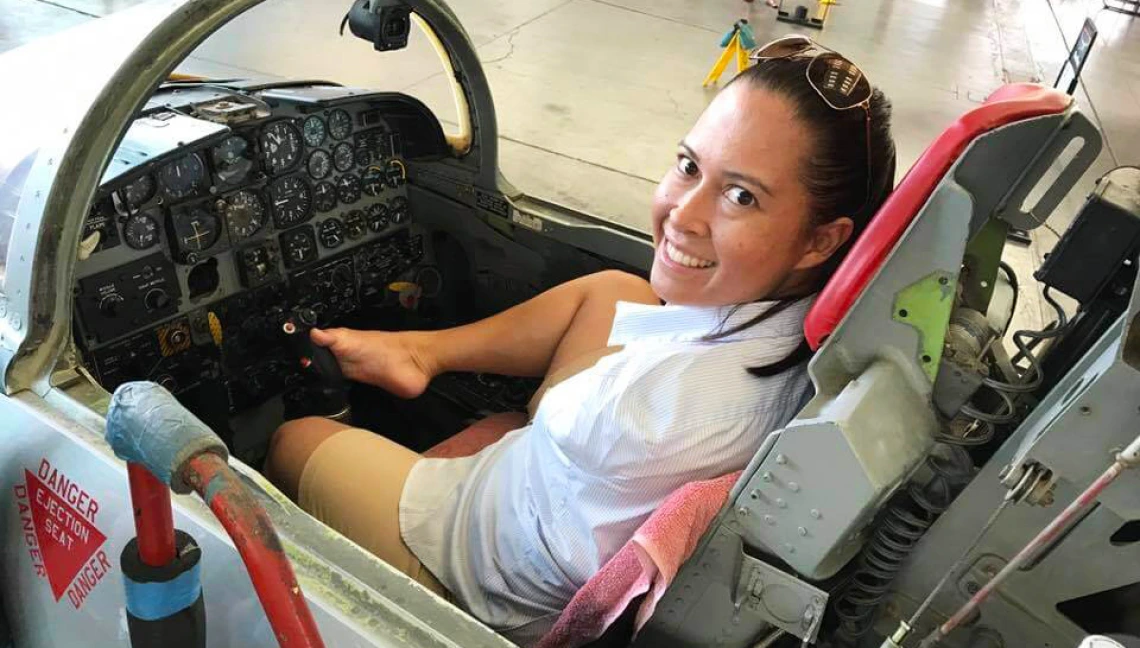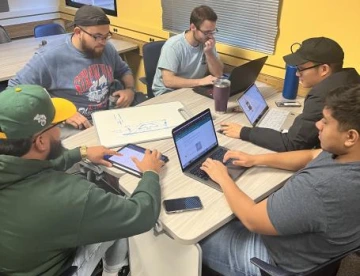Making ‘The Impossible Airplane’ a Reality

Jessica Cox
Jessica Cox Motivational Services
Project Title: Airplane Controls for Armless Pilots
Team 23060 Members:
Simon Quang Minh Ly, aerospace and mechanical engineering
Alejandro Lopez, aerospace engineering
Renatto Miguel Ramos, aerospace engineering
Zachary C. Thach, mechanical engineering
Sheehab Mahdi Zaman, electrical and computer engineering
Sponsor: Rightfooted Foundation
To the layperson, an airplane’s cockpit looks plenty complex. Multiple screens, buttons, switches and pedals surround the pilot with little room for free space. But a team of engineering students is turning this complex environment on its head to help those with disabilities. Interdisciplinary Capstone Team 23060 is creating a control system for the Van's RV-10 aircraft that can be used by pilots without arms.
The story begins with University of Arizona alum Jessica Cox, who was born without arms due to a rare birth defect. However, she leapt above her challenges, becoming a motivational speaker and the first armless, licensed pilot in history. Cox flies by crossing her right foot over to grab the yoke while her left foot crisscrosses to control the throttle on the panel. She has typically flown an Ercoupe low-wing monoplane. However, this plane’s technology is limited, and Cox has her goals set on flying the more complex and powerful RV-10.

Team 23060
"The biggest challenge for our team to overcome is creating a control scheme that can apply the force required to change the pitch, roll, yaw, and braking while at the same time being ergonomic enough so you don’t cramp up your legs," said student project leader Simon Quang Minh Ly, an aerospace and mechanical engineering major. “Cox can already fly her Ercoupe solo because the Ercoupe does not have any rudder pedals. But for aircrafts that use rudder pedals such as the RV-10, we hope that our control system will provide armless pilots with a way to safely fly solo.”
David Margolis, assistant professor of biomedical engineering and project advisor, was a natural fit for the project, as he is a pilot and hand surgeon. When he learned about Cox’s goal to create what she calls “The Impossible Airplane” armless RV-10, he knew the project would benefit from having UA engineers involved.
“I consider her a personal hero, even before I met her, and I talk to many of my patients that have had very bad upper extremity injuries about her and how anything they want to do is possible following their injuries,” Margolis said.
One major constraint for the project is that the controls need to integrate with the normal control system that will be on the co-pilot side of the plane. This way a backup pilot could use the plane either for additional training, or in an emergency.
Ideally, this project will mean Cox can upgrade from the two-person, 85 mph Ercoupe, to the four-person, 200 mph RV-10.
“The design will allow Jessica to do more advocacy for disability. More flying will also hopefully inspire more people to take up aviation to fill the need for pilots, mechanics, and other careers related to aviation,” said Patrick Chamberlain, Cox's husband and director of operations for her motivational services. “We are hopeful that on top of providing a design for future pilots without arms to use, it will also generate ideas toward a more universal design of cockpits.”
Cox plans to test the designs while connected to a simulator to see which works practically for just feet before trying to build it into the RV-10.
“If our team is successful, this project will have a profound impact on people all over the world,” Margolis said. “While many of the teams doing senior design projects are working on difficult or important projects, I've never seen a project that could have as big of an impact and motivate people to do amazing things as much as this project will.”

